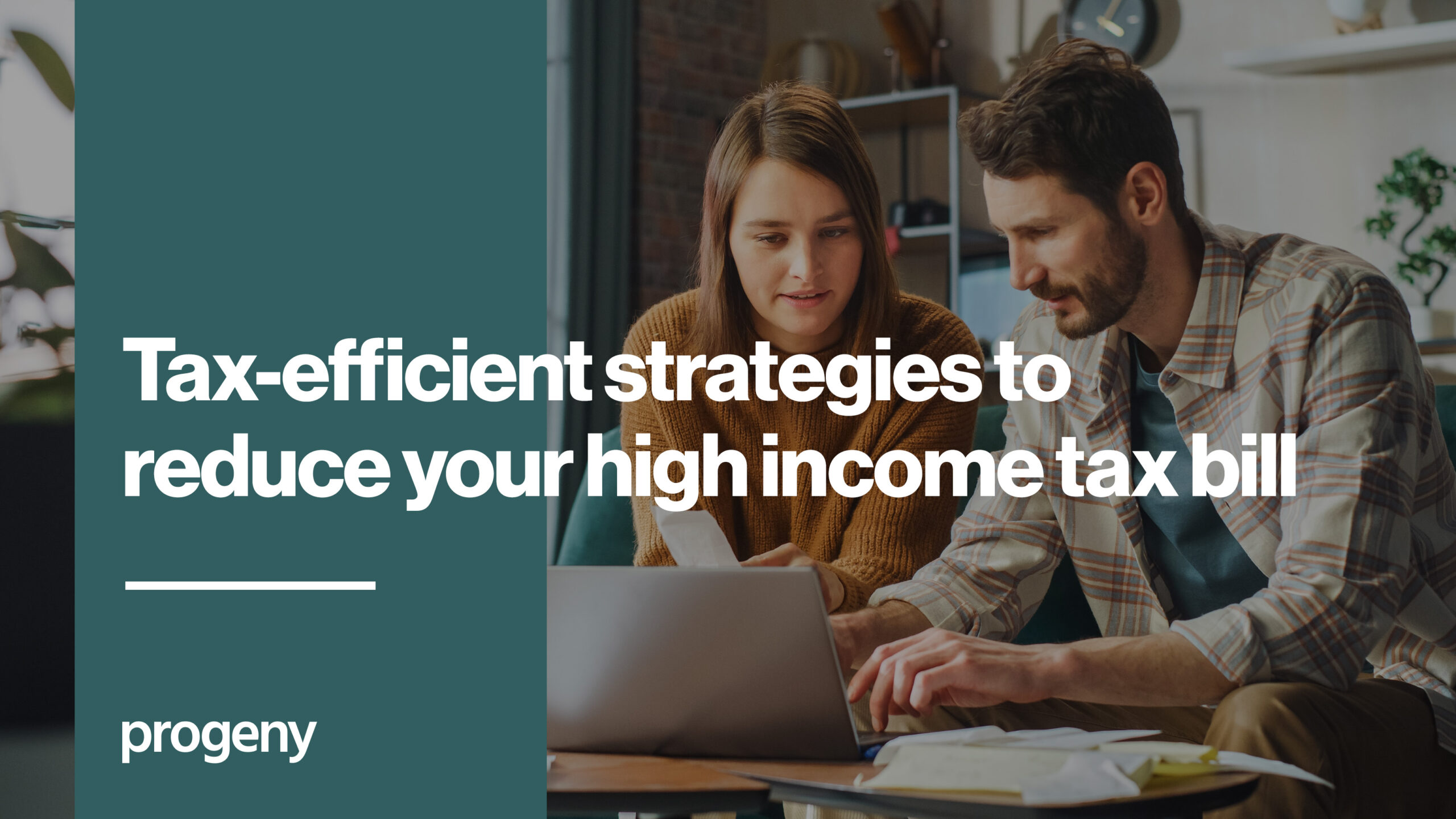
New data from HMRC shows the growing number of taxpayers paying income tax above the basic rate. The freezing of income tax thresholds is partly responsible for this, alongside rising average earnings edging more people into paying the higher rates.
In this blog, we take a look at recent HMRC taxpayer data and run through some tax-efficient strategies to reduce your high income tax bill.
HMRC data in review
The HMRC data, which included projections for the current tax year, also revealed:
- An increase in those paying tax – rising to 37.4 million in 2024/25, 6.2 million more than in 2019/20.
The personal allowance freeze (£12,570 since April 2021) is partly responsible for this 20% increase, as well as recent high inflation (21.3% between April 2021 and April 2024) which has resulted in an increase to wages, as well as the state pension, national minimum wage and national living wage.
- The number of those paying the higher rate of tax is estimated to be 6,310,000 in 2024/25. This is just over one in six of all taxpayers.
This proportion was less than one in 10 back in 2010/2011. The present tax year’s figure would have surpassed this, but for the Scottish government’s decision to bring forward a new advanced tax rate, at 45% for 2024/25.
In their UK-wide statistics, HMRC indexed advanced rate taxpayers as additional rate taxpayers, despite the fact their income would make them higher rate taxpayers outside of Scotland. Without this update, the higher rate numbers would have been 114,000 greater, based on Scottish Budget calculations.
- Those Scottish advanced rate taxpayers also explain some of the 180,000 jumps in the additional rate taxpayer numbers for 2024/25 to 1,130,000 – 3% of all taxpayers.
When the additional rate came into effect in 2010/11, (at 50% on income over £150,000), the corresponding proportion was just 0.75%. The threshold then decreased to £125,140 from April 2023.
Considering the state of government finances today, we may find that both the freezes on the personal allowance and higher and additional rate thresholds will remain unchanged until April 2028, as planned.
That’s why well structured, tax-efficient investments are crucial, and sound financial planning can help you reduce those high income tax bills.
What can you do to reduce high income tax?
Taking the above statistics into account, there are actions you can take to help reduce that daunting tax bill more effectively.
Pension contributions
Contributions to your pension effectively reduce your taxable income, allowing you to reduce the tax you pay and potentially even move you into a lower tax bracket. For example, if you contribute £800, HMRC tops this up with £200 to represent basic rate tax relief of 20%. Higher and additional rate taxpayers can then claim the remaining 20% or 25% respectively through their tax return.
If you are employed and your workplace pension is operated via salary sacrifice, making pension contributions through your workplace scheme will also reduce the amount of National Insurance you pay. This is because the contributions you make are deducted prior to calculating your taxable salary, thus reducing the amount subject to National Insurance.
If you’re a business owner, rather than paying yourself a higher salary or dividend you might want to consider pension contributions from the business. This can attract Corporation Tax relief, which is tax efficient for extracting profits, but then allows the money to be invested within the pension to grow tax free until you need it. You are also able to access 25% of the pension as a tax-free lump sum if needed in the future.
ISAs
For those who have existing savings or investments, making use of annual ISA allowances is paramount. The £20,000 contribution limit per individual each tax year means any returns on this money through interest, dividends or capital gains is tax free.
This is even more important now that dividend allowance and CGT exemptions have reduced considerably in recent years, alongside interest rates on cash savings increasing (more interest earned = more chance of being taxed on it). As £20,000 is an annual limit, it can allow significant sums to be built up in a tax efficient environment if used consistently over many tax years.
Charitable giving
Charitable giving allows you to support good causes whilst reducing your tax bill. This is commonly done through Gift Aid, where HMRC effectively repay basic rate tax on your donation to the charity instead of the donor. For example, if you donate £80, HMRC gives an additional £20 to the charity.
However, higher and additional rate taxpayers can claim a reduction to their own annual tax bill of the difference between their tax rate (40% or 45%) and the basic rate which has been given to charity (20%).
Tax-advantaged investments
Certain types of investments offer tax advantages as an incentive to encourage investment into small and medium sized companies seeking to raise finance.
These are Enterprise Investment Schemes (EIS), Venture Capital Trusts (VCT), and Seed Enterprise Investment Schemes (SEIS) – perceived to be higher risk investments due to the nature of the companies they invest in.
VCT and EIS offer 30% income tax relief on new investments, and for SEIS this increases to 50%. For example, a £50k investment into VCT/EIS will provide a reduction in your income tax bill of £15k.
This can be particularly beneficial for higher and additional rate taxpayers where all other allowances such as pensions or ISAs have been maximised already.
How we can help
Whether you are a business owner, investor, philanthropist or high earner just looking to save for retirement in a more tax efficient manner, a dedicated financial planner can help you put the above points into action and focus on reducing any high income tax charges you might face.
Contact our team of professionals today to start your journey.
The information contained within this document is subject to the UK regulatory regime and is therefore primarily targeted at consumers based in the UK.
Tax treatment depends upon individual circumstances and is based on current UK tax legislation, that is subject to change at any time.
The opinions stated in this document are those of the author and do not necessarily represent the view of Progeny and should not be relied upon to make a financial decision.
If you are unsure about the suitability of otherwise of any product or service, we recommend that you seek professional advice.








